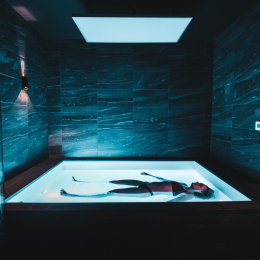A radical new breed of consumers is killing discount businesses across the globe and simultaneously making fortunes for entrepreneurs in the neo-economy.
They killed [global bookstore chain] Borders in Australia. They killed Borders in America. And paid full price for six million iPads.
Every day the media feeds us a diet of contradictory news. One minute we’re told consumers are radically cutting back and, in the next breath, Apple is predicting six million iPad sales for the current quarter – all at full price, all at full margin.
The difference between winners and losers has never been more stark. The new economic order (Planet NEO) is radicalising first-world economies.
They’re rejecting the traditional orthodoxy (Planet Traditional) of price, deal, features and status in favour of design, provenance, quality, authenticity, ethics and brands that stand for something.
These radical consumers – four million in Australia – are big spenders in any economic cycle. Right now 93 percent of them are in the top third of discretionary spenders in the economy.
So, what’s going on? Are we struggling or are we booming? We use science to get to the real truth. More to the point, I and my team of social scientists studied almost a million people on three continents over 10 years and looked at 2,000 measures of what they bought, why they bought it, and how that behaviour changed over time.
The results are startling. What is clear is that there is not one consumer market. There are two fundamentally different types of consumers with extremely different reasons behind what they buy and why they buy it. How distinctly different? They’re so different they might as well be from two different planets.
Each of these imaginary planets contains people of all ages, incomes and social groups. And in this economy they’re getting further and further apart.
People on the first planet, Traditional, are driven by the deal. Those on the other planet, NEO, are driven by a search for the extraordinary – the true sense of the “one-and-only”, and they are willing to pay for it.
Crucially, any business stuck in the space between the two planets will struggle more and more.
On Planet Traditional we have a huge number of people – just over 50 percent of the consuming population. That’s eight million Australians, or 120 million Americans.
As the economy faltered in 2008 with the Global Financial Crisis (GFC) and slipped into its hangover period, on Planet Traditional spending was unsafe, so Traditionals of all ages cut back on their discretionary spending, only venturing out when the deal was so good they couldn’t turn it down.
The GFC and its hangover caused the focus on price, features and status to intensify immeasurably. Traditionals aren’t just looking for a good deal, they need an extraordinary deal to make them part with their cash. Offers, deep discounts and sell-outs have increasingly become the currency on Planet Traditional.

The evidence shows that this behaviour is very likely to become permanent. You do not want to have the second best offer on Planet Traditional. To a Traditional the deal is everything, whether it comes from the best price, the most features, or the highest status – or, increasingly, all three.
Then there is the other planet where life is a little bit more complex. These individuals make their buying decisions on a measurably broader range of factors.
This is the New Economic Order (NEO). The evidence shows the economic importance of this group is surging.
Let’s look at the difference in the confidence on the different planets. Traditional consumer confidence is barely above pre-GFC levels, while the people on Planet NEO are a good 20 points ahead of that – and the gap is widening.
Those very confident NEOs earn more, are better educated, dominate entrepreneurial, senior management and professional roles and are socially progressive. NEOs research, shop and buy in ways that are significantly different to Traditionals. And the companies that understand them have flourished despite the economic hangover in our economy.
For a NEO, while price remains a factor, it is often not the most important in the decision to buy. They need to feel a connection with the product or service, and implicitly see it as a representation of their own individuality.
As a result, they place a premium on a whole range of things that typically wouldn’t even register for someone living on Planet Traditional. Some of the most significant of these include Design – NEOs place a value not only on how things look, but how that design translates into the elegance of how the product works.
Next comes Authenticity – NEOs want the real deal, no substitutes. And who they buy from is just as important as what they buy.
And then there’s Provenance. NEOs place a high value on things that are individual or unique, with a real sense of being the one and only. Discovery – the whispered secret is far more valuable than something mainstream to the individual living on Planet NEO.
They want to find things for themselves rather than being assailed by aggressive marketing. They value new experiences and want experiences that are on the edge. They’re the first to try new ideas, new concepts and new places.
When NEOs discover things that match their personal values, they spend freely. Ninety-three percent of NEOs are in the top third of discretionary spenders in the Australian economy.

Now let’s compare that to those who live on Planet Traditional, many of whom earn big salaries and have high net worth. What percentage of Traditionals are in the Big Spender category? Ninety three percent like NEOs? Only four percent of Traditionals qualify as Big Spenders. And yet for most of us, doing business on Planet Traditional is all we know.
The most obvious example of this consumer schism is of course everyone’s poster child – Apple. Their cutting-edge, uniquely designed products and anti-corporate style are a natural fit for the NEO. Their sales skyrocketed here and around the globe, all the way through the recession.
On Planet NEO, however, there is a natural tendency to smaller, more individual brands, as it’s easier to connect with companies and people than corporations and mission statements.
The craft brewing industry internationally saw sales rise by seven percent in 2014. Canadian Chip Wilson’s lululemon athletica fitness and leisure wear brand is part of a global NEO trend to yoga and a lifestyle beyond shopping. It’s growing exponentially with an authentic commitment to yoga that NEOs can connect to.
I remember a wonderful artisan bakery near my home that was thriving with a wide variety of customers. It flew in the face of conventional geo-demographic modelling. The baker told me that most of his customers happily paid a premium for authentic sourdough or incredible croissants and were driving right across town; old, young, jeans and T-shirts, suits, hip and buttoned down. That was, anyone looking for something exquisite, regardless of price, were there.
We can now explain it. We have something as simple as the two-planet premise and something so sophisticated to be the complete toolbox for business leadership and success. Not one built on observation and trends, but a model rooted in the very psyche, the mindset, of consumers – and mountains of data, thanks to our strategic alliance with Roy Morgan Research.
So when you hear one day that consumers are cutting back, and the next that they are buying more local produce, personal services or more cool technology, you aren’t going mad.

What you are actually hearing are the stories of two very different planets and the people who live on them. The evidence is clear. In this post-GFC economic reality there is no middle ground.
If you’re starting to realise that your business, or the business of your clients, is stuck in the space between the two planets, then you need to find a way out. FAST.
Whatever the size of your business, you need to be offering something that is extraordinary, or you need to be offering the extraordinary deal. Learning the difference is a matter of survival.
Today the first and most important question any entrepreneur needs to ask is “What Planet Am I On?”.
There are still fortunes to be made on Planet Traditional. For some companies this means breaking up into separate brands to truly succeed. But for most it is going to have to be a straight choice.
Making this choice is what becoming a 21st century brand is all about. This isn’t just academic theory – it’s hard facts, tools and strategies that make a tangible difference in business.
The key to extraordinary success is being on the right planet – your customers are already there. You should probably think about joining them.
- By Dr Ross Honeywill is an Australian social scientist, internationally published author and consumer strategist.




